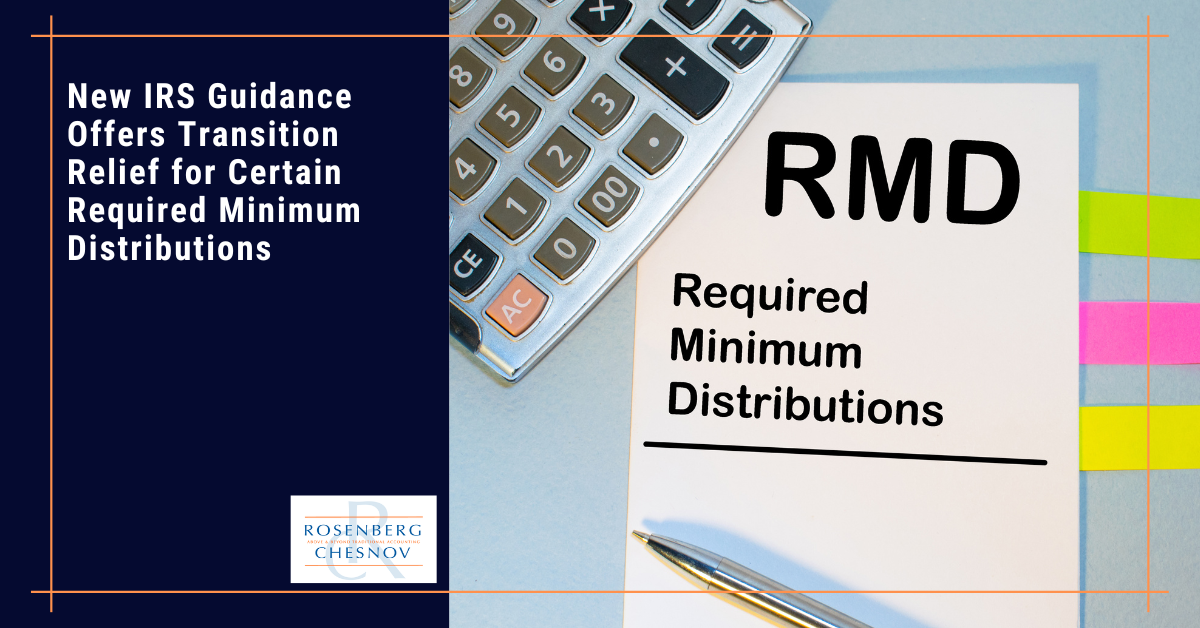What is an RMD (Required Minimum Distribution)?
A Required Minimum Distribution (RMD) is the minimum amount that one must annually withdraw from certain retirement accounts once the account holder reaches a specific age.
To put it more simply: Think of RMDs as a rule set by the U.S. government that makes sure you don’t just accumulate money in your retirement accounts forever and evade taxes. Essentially, they are a way for the government to ensure it gets its share.
Once you reach a certain age, which was previously 72 but is currently 73 as of 2023 onwards, you must start withdrawing a minimum amount from your retirement account every year. The exact number is calculated based on the total value of your account and your life expectancy according to IRS charts.
What’s important to remember is that these withdrawals are not optional — they are mandatory, hence the term ‘required.’ The money you withdraw counts as taxable income, meaning you’ll have to pay a portion back to the government.
Also, remember that this rule applies to most retirement accounts, except for Roth IRAs, where RMDs don’t kick in until after the owner has passed away.
The deadline for making these withdrawals is December 31 each year. If you miss this deadline, a hefty penalty can be imposed.
Did ‘Secure Act’ and ‘Secure Act 2.0’ change RMDs?
Both the ‘Secure Act‘ and ‘Secure Act 2.0‘ introduced significant changes to RMDs.
First, the ‘Secure Act’ of 2019 increased the age at which RMDs begin from 70½ to 72, giving retirees more time to grow their retirement savings. Further building on this, the ‘Secure Act 2.0’ increased the starting age for RMDs to 73, effective January 1, 2023.
This legislation provided an additional year for individuals to increase their tax-free retirement savings.
Then, very soon after, the ‘Secure Act 2.0’ also decreased the penalty for failing to take an RMD, allowing for higher catch-up contributions, enabling matching for Roth accounts, increasing limits for qualified charitable distributions, and boosting options for eligible longevity annuity contracts.
What do the new IRS guidelines on RMD transition relief mean?
The rapid changes to RMD rules have caused some issues this year.
Primarily, automated processes administered by IRA custodians, plan administrators, and service providers have yet to be updated immediately to reflect new realities.
Systems built around previous RMD rules are still running — and generating incorrect RMD amounts in some cases.
There is also confusion around which new rules impact 2023 RMDs versus being deferred until future years. For instance, under the ‘SECURE Act 2.0,’ the required beginning date for RMDs increased to age 73 starting in 2023. So, an individual born in 1951, turning 73 in 2024, would see their first RMD year shift from 2023 to 2024.
However, some payer systems are still incorrectly generating 2023 RMD amounts for these taxpayers, unaware of the required beginning date increasing to 73. The same applies to the revised 10-year rule for beneficiaries, which exempts certain individuals starting in 2023.
Lastly, systems blindly applying the 10-year framework across the board could incorrectly limit inherited RMDs.
With so much in flux, payer systems need time to catch up. But in the interim, taxpayers face avoidable RMD issues through no fault of their own. To help navigate this transitional period, the IRS provided guidance through IRS Notice 2023-54, which offered temporary flexibility and relief to individuals and plan administrators dealing with RMDs.
The notice extended the deadline for completing indirect rollovers of mischaracterized RMDs (that deadline, September 30, 2023, has now passed).
Additionally, the notice provided relief for those who didn’t take an annual RMD following the death of the participant/IRA owner in 2021, 2022, or 2023. It also stated that final regulations regarding RMDs will not apply until 2024 at the earliest, giving individuals and plan administrators more time to adjust to the new rules.
In simpler terms, this notice was like a grace period from the IRS, giving people more time and flexibility to manage their retirement distributions without facing penalties.
But it’s critical to understand exactly who qualified for this relief and how to leverage it.
Does this RMD relief apply to you?
Whether you qualify depends on your specific situation. Let’s walk through key taxpayer scenarios.
You may qualify if:
- You were born in 1951 and turned age 72 in 2023.
-
- This applies because the required beginning date changed to 73 starting in 2023.
- You inherited an IRA or retirement account from someone born in 1951.
-
- This applies because their required beginning date changed to 73.
- You’re an eligible beneficiary exempt from the 10-year rule
-
- e.g. minor child, disabled, chronically ill, or not more than 10 years younger than deceased.
- You received an RMD between January 1 and July 31, 2023, incorrectly based on prior rules.
You likely won’t qualify if:
- You were born before 1951
- You don’t meet one of the ‘SECURE Act 2.0’ exemptions from the 10-year rule
- You didn’t receive an incorrect RMD in early 2023
Bottom line — this relief is limited to specific situations stemming from the recent RMD rule changes that systems haven’t caught up with yet.
How can you make the most of this RMD relief?
Even though certain deadlines have passed, there are still some helpful actions you can take to set yourself up for 2024’s RMD landscape.
Here’s how to get ahead:
- Review your withdrawal strategy holistically, factoring in age, account types, beneficiary planning, and tax considerations. Work with an advisor to stress test different approaches. Optimize for tax efficiency and legacy goals.
- Pay special attention to any inherited IRA/retirement accounts. Confirm with the custodian that inherited RMDs will be calculated based on beneficiary life expectancy, not the 10-year rule. Model projections to align payouts with needs.
- Scrutinize your beneficiary designations before December 31st. Ensure contingent beneficiaries are named, review primary vs. secondary heir logic, and capture key estate planning moves via customized beneficiary forms.
- Consider the power of $100,000 qualified charitable distributions (QCDs) from IRAs if income limits deductibility. QCDs satisfy RMDs without taxation.
- For Roth conversions, understand 2024’s new ordering rules. Consult an advisor to compare converting in 2023 vs 2024 under the new regimen.
- Keep an eye on potential rises in 10-year treasury yields. RMD amounts correlate, so projections may need adjusting.
Staying nimble amidst regulatory changes takes work. But those who put in the effort now will be poised to smoothly navigate 2024’s RMD landscape.
While 2023 offers some reprieve, remember that this relief is only temporary, and additional transitional challenges may remain even in 2024 and beyond — so remaining nimble is key.
An RMD strategy tailored to the evolving rules can help you navigate change seamlessly, but it’s vital to stay vigilant and responsive to new guidance to avoid missteps. As always, the best way to ensure you maximize your strategy is to consult with tax professionals (like us!).
So review your situation to see if you qualify for relief — and take timely action to leverage the flexibility while you can.
Would you like some help?
If you are a client and would like to book a consultation, call us at +1 (212) 382-3939 or contact us here to set up a time.
If you aren’t a client, why not? We can take care of your accounting, bookkeeping, tax, and CFO needs so that you don’t have to worry about any of them. Interested? Contact us here to set up a no-obligation consultation.
Stay informed
Interested in receiving updates in your mailbox? Check out our newsletter, full of information you can use. It comes out once every two weeks, and you can register for it below.





